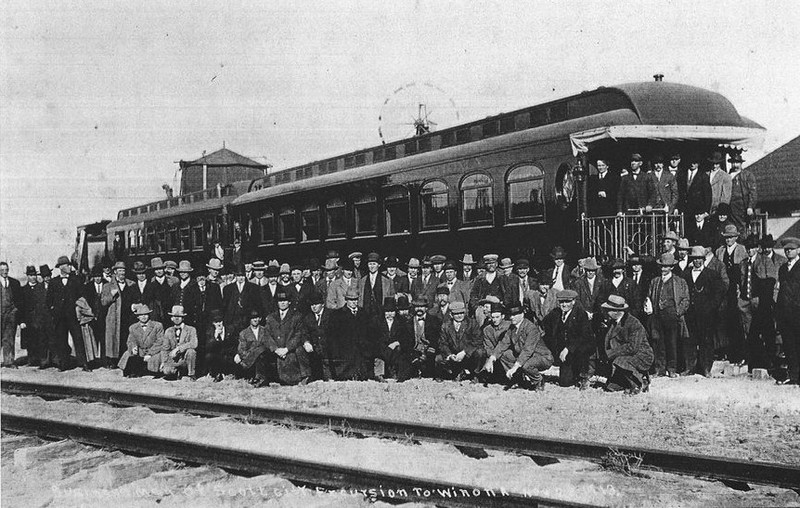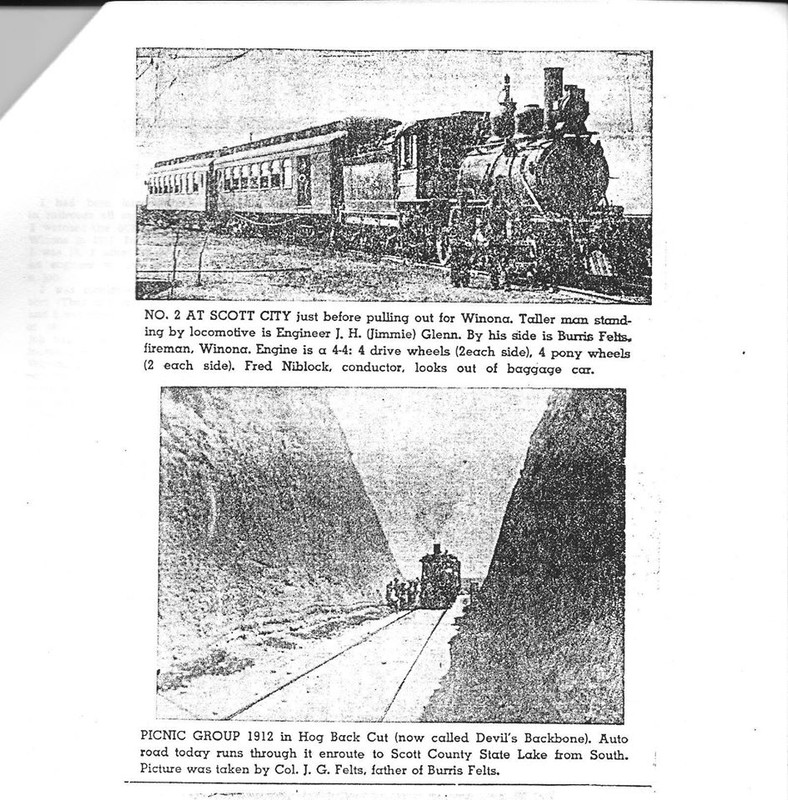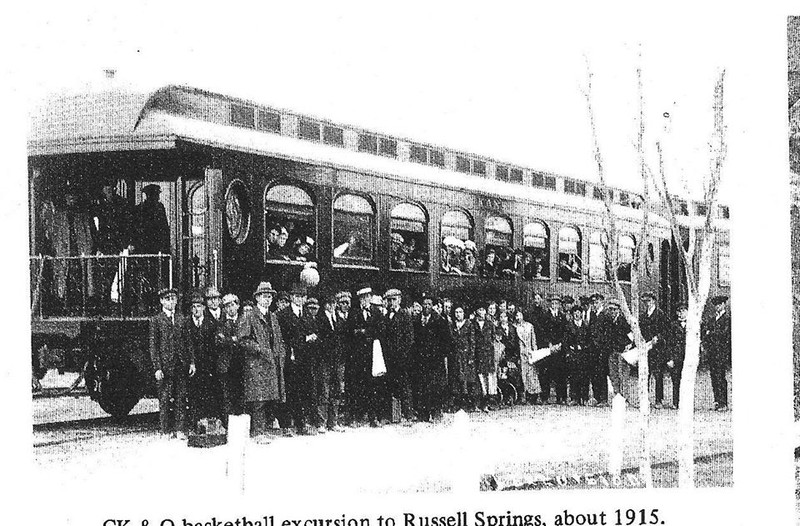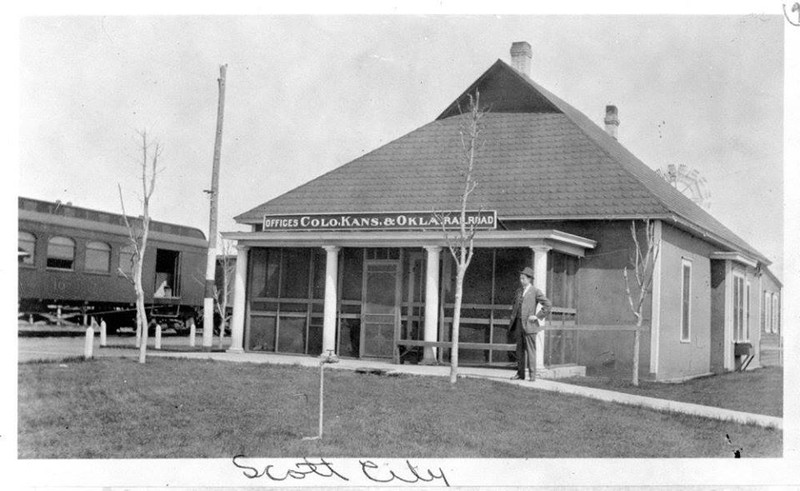Colorado, Kansas and Oklahoma Company, CK&O Railroad
Introduction
Text-to-speech Audio
Images
CK&O Picnic Train

Bessie & the Cut

All Aboard!

CK&O Depot

Backstory and Context
Text-to-speech Audio
Originally built under the name of Scott City, Gulf and Northern Railroad, it reportedly cost $1,325,000.00 for the 53 miles of track and the depots along the route. Plans were for it to go to Goodland but, unfortunately, that never happened. It ran beginning in 1911 but became insolvent at the beginning in 1913. From then to 1917 it became known as the Colorado, Kansas and Oklahoma Company (CK&O) Railroad.
The little train shuttled between Scott City and Winona daily, except Sunday. It could only maintain a speed of 17-20 MPH, so that it could let people off and pick them up on the return trip. On many Sundays, they would run a "picnic train" to the scenic areas on Beaver Creek north of town. It was a favorite pastime to pack a lunch and spend the day at what would later become the state park. The train ran 50 miles to Winona, with 10 stops along the way. It was a standard gauge track of 70 lbs. of steel. It included 3 locomotives, 3 passenger cars, 2 baggage cars and 12 freight cars.
Unfortunately, several things happened to cause the downfall of the line. The drought, the scourge of the High Plains, and with the coming of the "Tin Lizzy,” it became easier for people to use their own cars. The train fell into bankruptcy. The last scheduled run was completed about Nov. 1, 1917. There are two stories about what happened to it. One version says the property was sold on December 21, 1917 to Joseph Hyman of Chicago for $316,000. He bought it to junk for steel, which was badly needed for the war effort. The other story is that it was sold and shipped to Shanghai, China where it was used in railway construction. Either way, the remains of Old Betsy (1 of the locomotives) reposed on the prairie near the south entrance into the State park until WWII when it was turned into scrap metal for the Allied cause.
Times were changing. Whereas before, nearly everything people ate or drank, the fuel that was burned, the materials to build with had come in on the railroad. Now motorized cars changed the way of life throughout the country. After the railroad was disbanded and all the tracks were pulled up, the old railroad route became the highway going into the park through Devils Backbone. The Railroad only lasted 6 years but was a wonderful addition of convenience and pleasure for the settlers!
Sources
Scott City Northern Railroad, Scott City History - Now & Them. July 17th 2017. Accessed May 10th 2021. https://www.facebook.com/groups/337658763076204/permalink/793374580837951.
Lawrence, Deb. Colorado, Kansas & Oklahoma Railroad, Scott City History - Now & Them. August 23rd 2015. Accessed May 10th 2021. https://www.facebook.com/groups/337658763076204/permalink/476351705873575.
Scott County Historical Society. History of Early Scott County. Edition 1. Volume 1.Pages 340-341. Scott City, Kansas. Scott County Historical Society, 1977.
Scott County Historical Society
Scott County Historical Society
Scott County Historical Society
Scott County Historical Society
